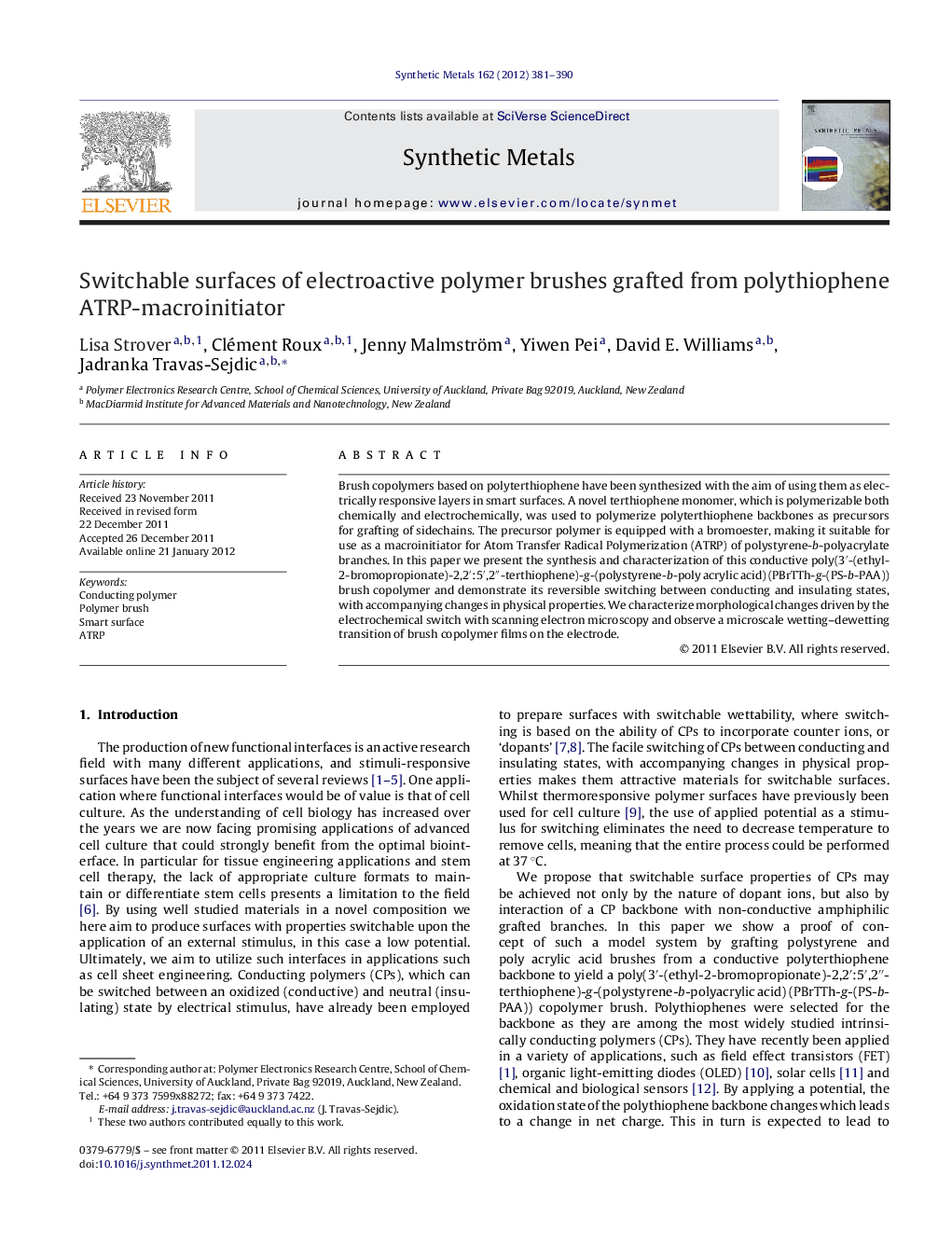| Article ID | Journal | Published Year | Pages | File Type |
|---|---|---|---|---|
| 1441828 | Synthetic Metals | 2012 | 10 Pages |
Brush copolymers based on polyterthiophene have been synthesized with the aim of using them as electrically responsive layers in smart surfaces. A novel terthiophene monomer, which is polymerizable both chemically and electrochemically, was used to polymerize polyterthiophene backbones as precursors for grafting of sidechains. The precursor polymer is equipped with a bromoester, making it suitable for use as a macroinitiator for Atom Transfer Radical Polymerization (ATRP) of polystyrene-b-polyacrylate branches. In this paper we present the synthesis and characterization of this conductive poly(3′-(ethyl-2-bromopropionate)-2,2′:5′,2″-terthiophene)-g-(polystyrene-b-poly acrylic acid) (PBrTTh-g-(PS-b-PAA)) brush copolymer and demonstrate its reversible switching between conducting and insulating states, with accompanying changes in physical properties. We characterize morphological changes driven by the electrochemical switch with scanning electron microscopy and observe a microscale wetting–dewetting transition of brush copolymer films on the electrode.
Graphical abstractFigure optionsDownload full-size imageDownload as PowerPoint slideHighlights► A novel conducting polymer ATRP macroinitiator is described and used to graft PS-b-PAA branches.► Electroactive polymer brushes described can be reversibly oxidized and reduced. ► A dramatic change in morphology is observed between the oxidized and reduced polymer brushes.
